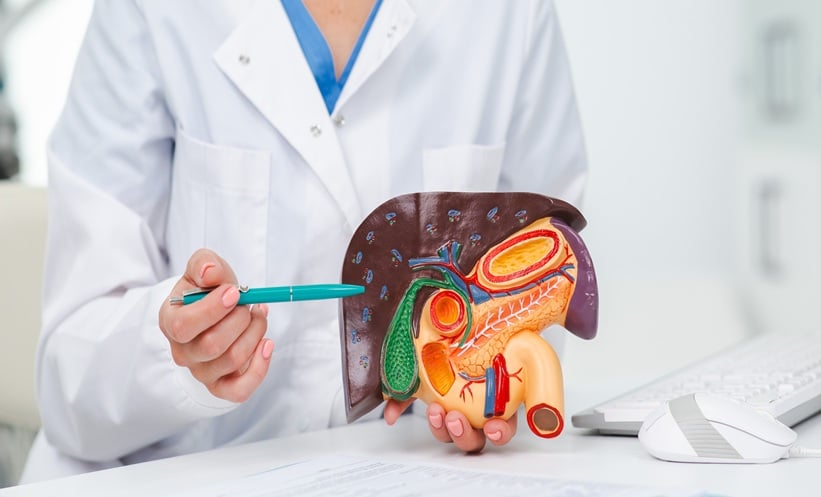METABOLIC dysfunction-associated steatotic liver disease (MASLD), formerly known as NAFLD, affects an estimated 32.4% of the global adult population. Its more severe form, metabolic dysfunction-associated steatohepatitis (MASH), is estimated to affect around 5%. MASH is particularly dangerous when coupled with moderate or advanced fibrosis (stage F2 or higher), known as ‘at-risk MASH’, which greatly increases the risk of liver failure and other serious complications.
Despite its scale and impact, MASLD remains severely underdiagnosed, even in specialist care settings. Many individuals remain unaware of their condition until it progresses to cirrhosis or liver cancer. This delay in diagnosis often eliminates the opportunity for timely intervention, resulting in poorer outcomes and greater health system costs.
A 2023 global call to action by over 300 experts highlighted the need for clear, cross-specialty care pathways to support earlier identification and referral of people at risk. However, most health systems currently lack the infrastructure to absorb the growing demand for diagnosis and care. Operational readiness to apply clinical guidelines in non-hepatology settings also remains low in many regions.
There is hope on the horizon as non-invasive diagnostic tools and artificial intelligence-supported screening are enabling liver disease to be identified earlier, and more easily, in primary care settings. In parallel, new pharmacological treatments such as resmetirom, approved in the US in 2024, and the anticipated approval of semaglutide in 2025 are providing new therapeutic options. Several additional drug classes, originally developed for obesity and Type 2 diabetes, are also showing promise for treating MASH.
Looking ahead, the authors propose a strategic push to double the diagnostic rate of at-risk MASH by 2030, aligning with the United Nations’ Sustainable Development Goals. They call for a united, multidisciplinary approach to transform MASH diagnosis and care, arguing that with the tools and knowledge now available, this global health threat can be meaningfully reduced, if decisive action is taken.
Reference
Lazarus JV et al. A call for doubling the diagnostic rate of at-risk metabolic dysfunction-associated steatohepatitis. Lancet Reg Health Eur. 2024;0(0):101320.








